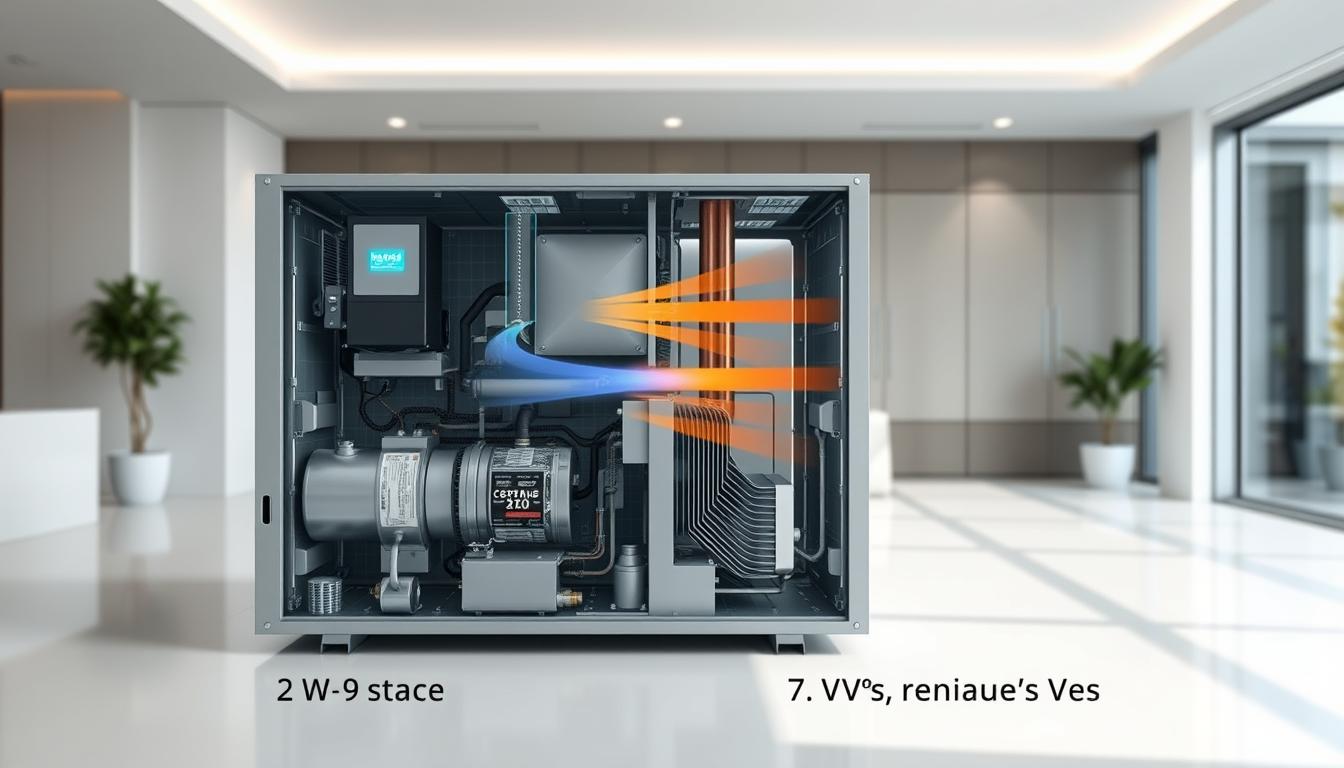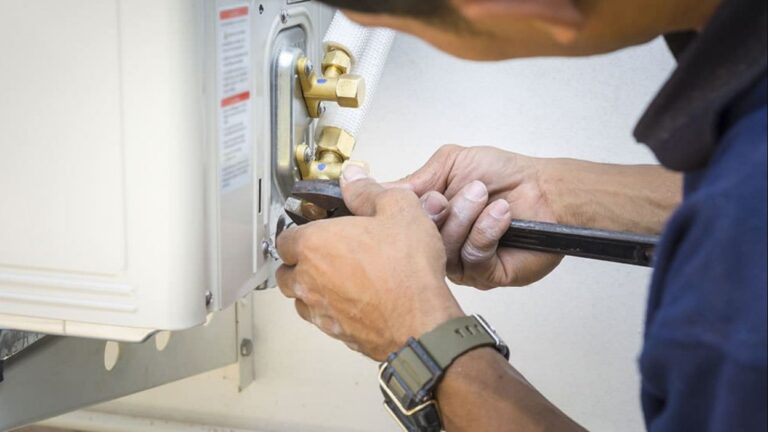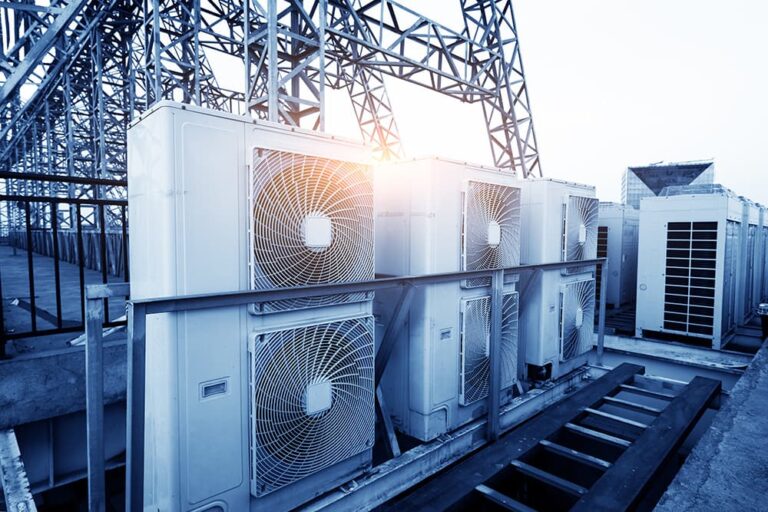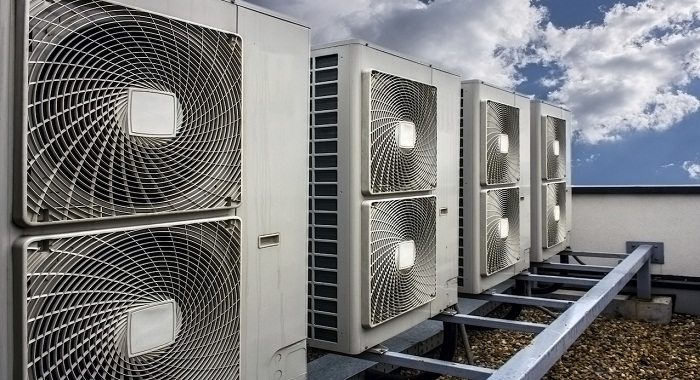Two-Stage vs Variable Speed HVAC: Which One Is Best?
When it comes to maintaining a comfortable temperature in your home, the type of Heating, Ventilation, and Air Conditioning (HVAC) system you have can make a significant difference.
Modern HVAC systems have evolved beyond the basic on/off functionality, offering more options for homeowners, including two-stage and variable speed systems, which provide improved efficiency and comfort.
Choosing the right system is crucial as it affects not only your energy bills but also the overall indoor air quality and comfort level in your home.
This article will delve into the differences between single-stage, two-stage, and variable speed systems, helping you understand which one might be the best fit for your specific needs.
Key Takeaways
- Understanding the differences between single-stage, two-stage, and variable speed HVAC systems is crucial for making an informed decision.
- The right HVAC system can significantly improve home comfort and energy efficiency.
- Two-stage and variable speed systems offer more advanced features compared to traditional single-stage systems.
- Choosing the correct system affects energy bills, indoor air quality, and overall comfort.
- A comprehensive comparison will help determine which system is best suited for specific home needs.
Understanding HVAC Compressor Types
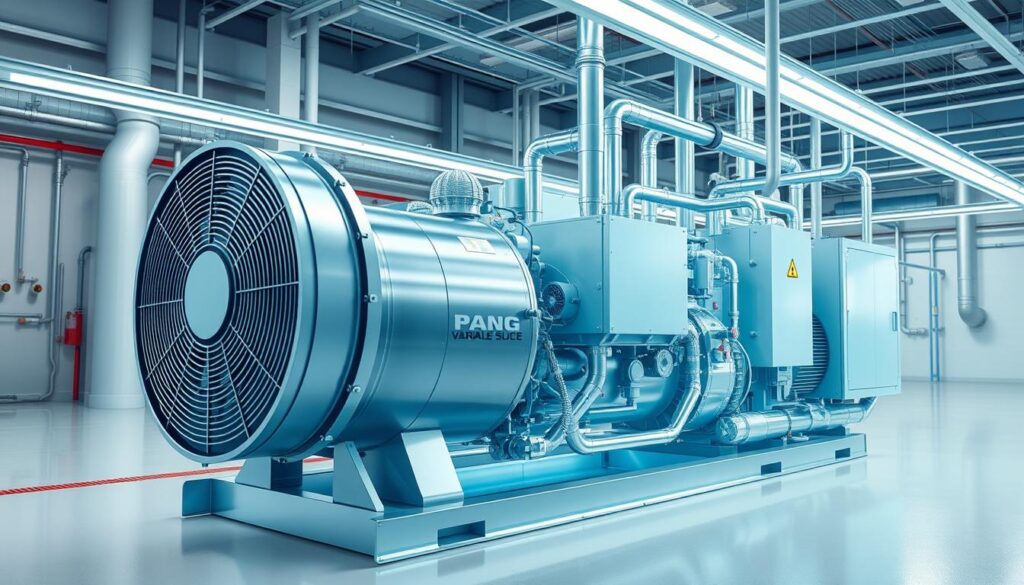
When it comes to HVAC systems, understanding the different compressor types is crucial for making an informed decision. The compressor is the heart of any HVAC system, and its type can significantly affect the system’s efficiency, performance, and overall cost.
What Is a Single-Stage HVAC System?
A single-stage HVAC system operates at one speed, either it’s fully on or completely off. This type of system is simple and less expensive upfront but may not provide the most efficient or consistent temperature control.
What Is a Two-Stage HVAC System?
A two-stage HVAC system has two speeds of operation: a lower stage for milder days and a higher stage for more extreme temperatures. This allows for more efficient operation and better temperature control than single-stage systems. For more detailed information on two-stage systems, you can refer to this article that explains the differences between various HVAC systems.
What Is a Variable Speed HVAC System?
A variable speed HVAC system is the most advanced type, capable of operating at multiple speeds and capacities. It adjusts its output based on real-time conditions such as indoor and outdoor temperatures and humidity levels, providing the most precise temperature control available. Variable speed systems can modulate their output from 25% to 100% capacity, ensuring consistent comfort levels and significant implications for energy efficiency.
| System Type | Operation | Efficiency |
|---|---|---|
| Single-Stage | On/Off | Low |
| Two-Stage | Two speeds | Medium |
| Variable Speed | Multiple speeds | High |
How Two-Stage HVAC Systems Work

At the heart of two-stage HVAC systems lies a dual-setting operation that significantly impacts their performance and energy consumption. This operation allows the system to function at two different capacities, thereby providing a more flexible and efficient heating and cooling solution.
The Dual-Setting Operation
The dual-setting operation is the hallmark of two-stage HVAC systems, enabling them to operate at a lower capacity when the heating or cooling demands are not extreme. This not only reduces energy consumption but also enhances comfort by maintaining a more consistent temperature throughout the home.
By running at a lower stage during milder conditions, two-stage systems can significantly reduce the energy required to maintain a comfortable indoor climate.
Performance Compared to Single-Stage Systems
When compared to single-stage systems, two-stage HVAC systems offer several performance advantages. They provide more consistent temperature control, reduce wear and tear on the system, and handle varying load conditions more effectively.
| Performance Metric | Single-Stage Systems | Two-Stage Systems |
|---|---|---|
| Energy Efficiency | Lower | Higher |
| Temperature Control | Less Consistent | More Consistent |
| System Longevity | Shorter | Longer |
How Variable Speed HVAC Systems Work
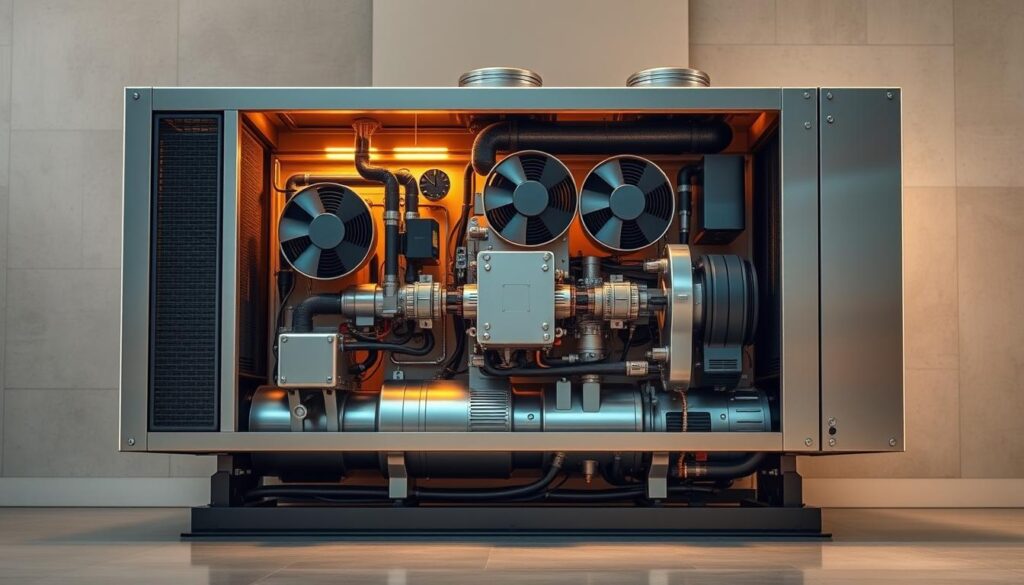
Understanding how variable speed HVAC systems work is crucial for appreciating their benefits. These systems are designed to provide superior comfort and efficiency by adjusting their operation to match the specific needs of your home.
Multiple Speed Settings and Continuous Operation
Variable speed HVAC systems can operate at various speed settings, allowing them to maintain a consistent temperature throughout your home. Unlike traditional systems that cycle on and off, variable speed systems run continuously, albeit at different capacities. This continuous operation enables them to circulate air more effectively, eliminating hot and cold spots.
Precision Temperature Control Capabilities
One of the key advantages of variable speed HVAC systems is their ability to maintain temperature within half a degree of the setpoint. This precision temperature control is achieved through the system’s ability to adjust its capacity and operate at lower speed settings, consuming less power and making them more energy-efficient. Additionally, the continuous circulation of air helps in maintaining a consistent humidity level, enhancing overall comfort.
By operating at various capacity levels, variable speed systems can precisely match their output to the changing needs of your home throughout the day. This not only improves comfort but also contributes to energy efficiency.
Two-Stage vs Variable Speed HVAC: Key Differences
When deciding between a two-stage and a variable speed HVAC system, understanding their key differences is crucial. Both systems offer advanced features over traditional single-stage systems, but they operate in distinct ways that can significantly impact your comfort, energy consumption, and overall satisfaction.
Energy Efficiency Comparison
Variable speed HVAC systems are generally more energy-efficient than two-stage systems. This is because they can modulate their output to match the exact heating or cooling needs of your home, rather than operating at one of two fixed levels. According to the data, variable speed systems can run at lower capacities, which not only saves energy but also reduces wear on the system. As a result, variable speed systems can offer significant long-term energy savings.
Temperature Consistency and Comfort
Both two-stage and variable speed HVAC systems provide more consistent temperatures than single-stage systems. However, variable speed systems excel in this area due to their ability to make minute adjustments to their output. This results in a more stable indoor climate, enhancing overall comfort. As one expert notes, “Variable speed systems can maintain a consistent temperature within a fraction of a degree, creating a more comfortable living environment.”
Humidity Control Capabilities
Variable speed HVAC systems also have an edge when it comes to humidity control. Their ability to run for longer periods at lower speeds allows for more effective dehumidification during the cooling season. This can be particularly beneficial in humid climates, where excessive moisture can lead to mold growth and discomfort. By maintaining optimal humidity levels, variable speed systems can improve indoor air quality and overall comfort.
Noise Level Differences
Noise level is another critical factor to consider when choosing between two-stage and variable speed HVAC systems. Variable speed systems are notably quieter due to their lower operating speeds. As the data indicates, “variable speed furnaces can function at lower speeds when they aren’t required to be at full capacity, helping to reduce noise.” This makes them ideal for homes where noise needs to be minimized, such as in bedrooms or home offices.
In conclusion, while both two-stage and variable speed HVAC systems offer advantages over traditional systems, their differences in energy efficiency, temperature consistency, humidity control, and noise levels can significantly impact your decision. By understanding these key differences, you can make an informed choice that best suits your needs and preferences.
Impact on Indoor Air Quality
When it comes to maintaining a healthy indoor environment, the role of HVAC systems cannot be overstated. The type of HVAC system installed in a home significantly affects the quality of the air indoors.
Filtering Air with Two-Stage Systems
Two-stage HVAC systems offer improved air filtration compared to single-stage systems. By operating at two different capacities, they can provide a more consistent flow of air through the filters, enhancing the overall air purification process.
However, the intermittent operation of two-stage systems still allows for periods where the air is not being filtered. This can lead to fluctuations in indoor air quality.
Superior Air Purification with Variable Speed Systems
Variable speed HVAC systems, on the other hand, provide continuous and consistent air filtration. Their ability to operate at multiple speeds allows for a more precise control over the air circulation, ensuring that the air is constantly being purified.
As noted by industry experts, “Variable speed air conditioners are more effective at dehumidification and air filtration, leading to cleaner air entering the indoor space.” This continuous operation, coupled with their superior dehumidification capabilities, creates an environment that is less conducive to allergens, mold, and bacteria.
“The continuous operation of variable speed air conditioners allows for constant air filtration throughout the home, significantly improving indoor air quality.”
The slower and more consistent air movement in variable speed systems also improves the effectiveness of filtration by allowing more contact time with filters. Furthermore, these systems can be integrated with whole-home air purification systems for maximum air quality.
Cost Considerations for Both Systems
Homeowners must weigh the upfront costs against the long-term savings when choosing between two-stage and variable speed HVAC systems. The total cost of ownership includes both the initial investment and the ongoing operating expenses.
Initial Investment Comparison
The initial cost of an HVAC system is a significant factor in the decision-making process. Single-stage systems are typically the most affordable upfront, while variable speed systems are the most expensive. Two-stage systems fall somewhere in between. The higher initial cost of variable speed systems is due to their advanced technology and energy-efficient design.
When evaluating the initial investment, consider the budget and the potential return on investment. Although variable speed systems are more expensive upfront, they offer significant energy savings over time.
Long-Term Operating Costs and Energy Savings
The long-term operating costs of HVAC systems vary significantly. Variable speed furnaces are designed to operate at lower speeds most of the time, resulting in substantial energy savings. In contrast, single-stage systems tend to be less efficient and cost more to operate in the long run.
To calculate the potential energy savings, consider factors like local utility rates, usage patterns, and climate. A comprehensive analysis of these factors will help homeowners understand the true long-term cost difference between the options and make an informed decision that fits their budget.
Which System Is Right for Your Home?
As you consider upgrading your home’s heating and cooling, the type of HVAC system you choose can significantly impact your comfort and energy bills. Factors such as your home’s size, layout, insulation levels, and the local climate all play a crucial role in determining whether a two-stage or variable speed HVAC system is best suited for your needs.
For larger homes, especially in areas that experience a range of temperatures throughout the year, such as Denton County, a two-stage or variable speed furnace can offer better performance and efficiency. While a single-stage furnace might struggle to heat larger spaces effectively, two-stage and variable speed systems provide more flexibility and can operate at lower capacities for longer periods, enhancing comfort and potentially reducing energy consumption.
Your budget and comfort preferences are also critical considerations. If you prioritize precise temperature control and reduced humidity levels, a variable speed HVAC system might be the better choice, despite potentially higher upfront costs. On the other hand, a two-stage system can offer a balance between performance and cost, making it a practical option for many homeowners.
Ultimately, the decision should be informed by a professional assessment to ensure the chosen HVAC system is properly sized and configured for your home’s specific needs. By weighing factors such as energy efficiency, comfort, and budget, you can make an informed decision that enhances your home’s heating and cooling.

